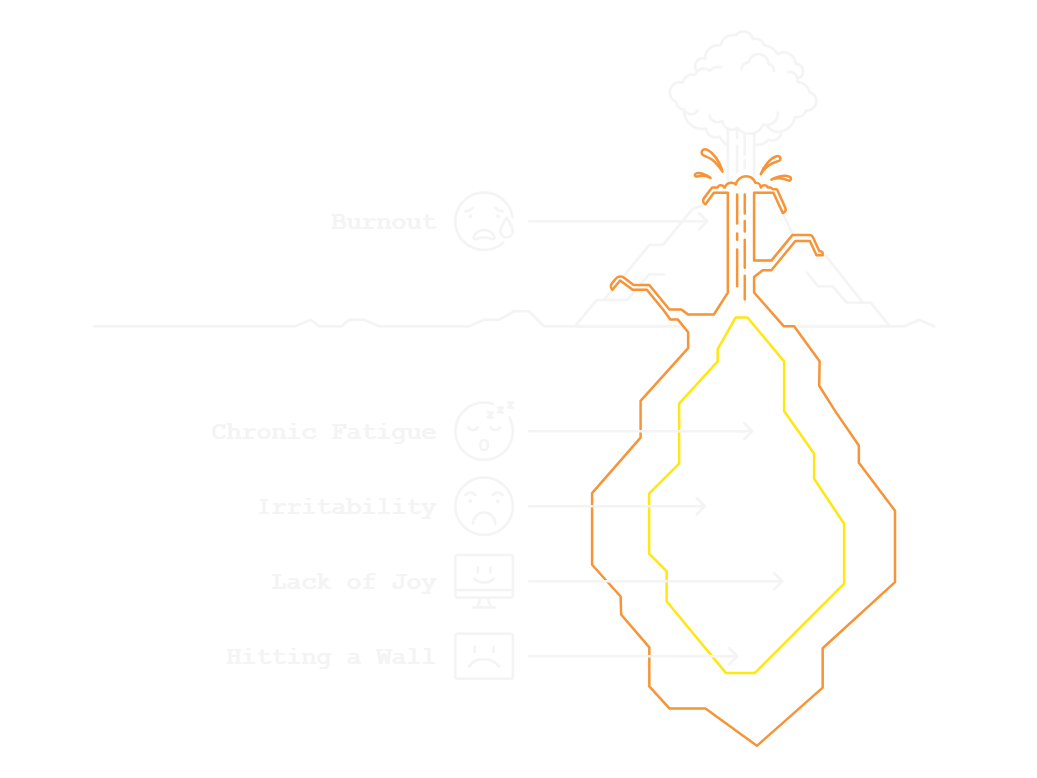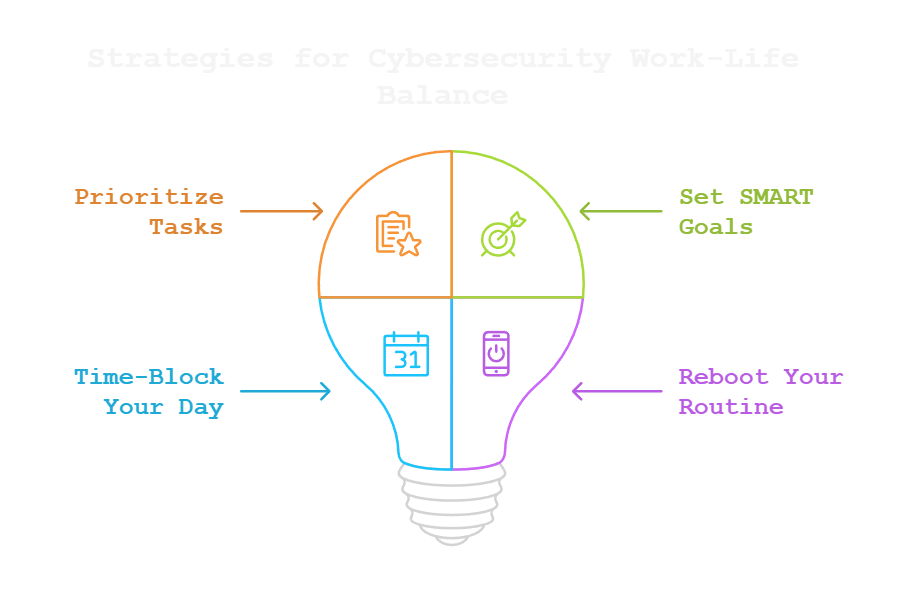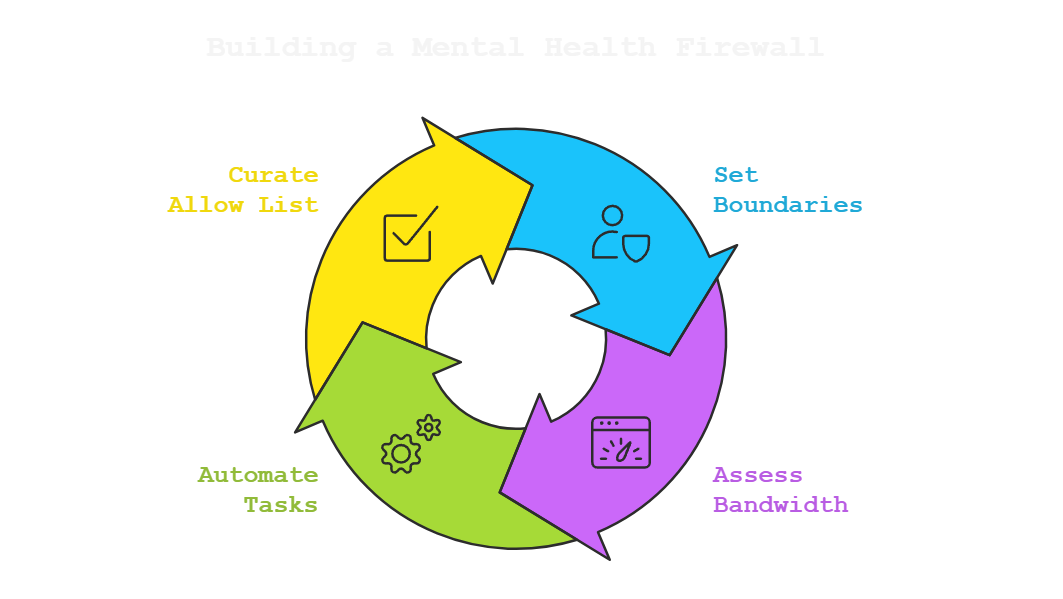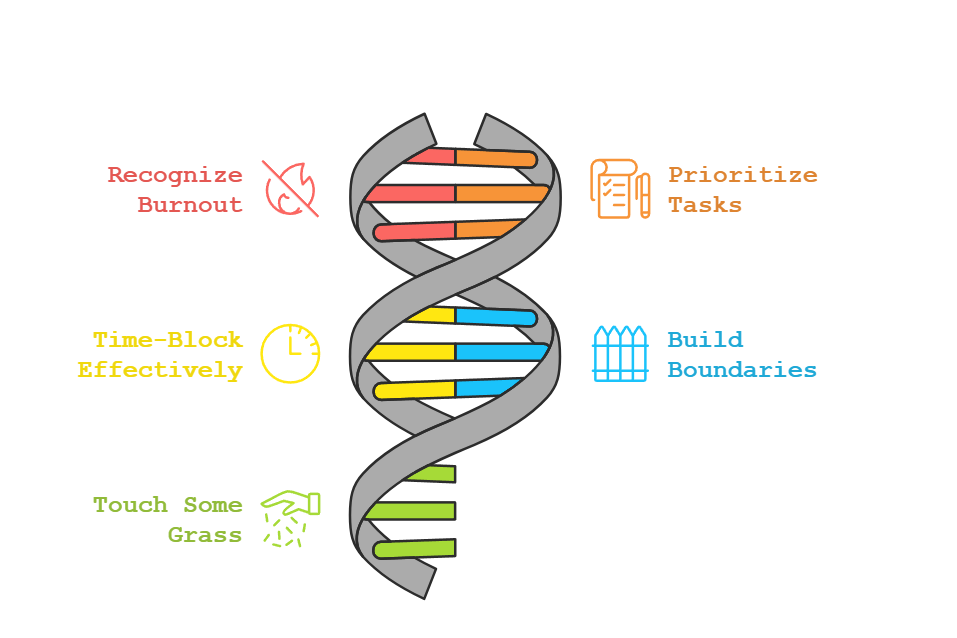Burn Bright, Don’t Burn Out
Learn to spot burnout, balance priorities, and thrive in cybersecurity with tips on time-blocking, boundaries, and taking intentional breaks to protect your well-being.

Cybersecurity is a playground for the curious—a field full of shiny tools, endless certifications, and high-stakes puzzles. But here’s the hard truth: running at full throttle with no breaks is the fastest route to burnout.
We’ve all been there: eyes glued to the screen, chasing the next vulnerability, certification, or client deadline, convincing ourselves that “just one more thing” won’t hurt. Until it does.
Burnout hits like a zero-day exploit—unexpected, disruptive, but avoidable if you know what to watch for. Let’s explore how to spot the signs, prioritize what matters, and keep your mental health patched and resilient.
Recognizing Burnout
Burnout isn’t just being tired; it’s like a DDoS attack on your brain. You’re overwhelmed, unmotivated, and running on fumes. Recognizing the signs early can save you from productivity crashes and mental fatigue. Symptoms might include:
- Chronic fatigue, even after rest.
- Cynicism or irritability that turns every email into a personal attack.
- A lack of joy in the things that used to excite you (yes, even the shiny new tools).
For me, it looked like saying “yes” to everything—until I hit a wall. Burnout sneaks up on you, but awareness is your first line of defense.

The Shiny Object Syndrome
Certifications? Projects? Side hustles? In cybersecurity, distractions are often disguised as opportunities. Do you ever feel like you’re juggling too many shiny things at once, only to realize you’re dropping the ball on the important ones?
Not every task is critical. Chasing too many “shiny” things leaves you spread thinner than an underfunded security budget. Think of it like patch management. Sure, there are 500 vulnerabilities on your list, but are they all high-risk? No. Focus on what truly impacts your goals, and let the rest sit in the backlog guilt-free.
Hacking Your Way Back to Balance
Let’s get practical. Here are some strategies to protect your mental health while thriving in cybersecurity:
1. Prioritize Tasks Like Risks
Apply triage to your to-do list:
- Critical (High Priority): Tasks with immediate consequences (e.g., health, family time).
- Medium Priority: Important but can wait.
- Low Priority: Nice-to-haves that won’t break anything if skipped.
2. Set SMART Goals
Specific, Measurable, Achievable, Relevant, Time-bound. Instead of saying, “I need more balance,” try, “I will spend one hour outside this Saturday.” This framework works for cybersecurity, life, and everything in between.
3. Time-Block Your Day
Just like limiting the scope of a penetration test, time-blocking helps you focus without overloading your schedule. Allocate focused time for work, hobbies, and breaks—and stick to it.
Time-Blocking Example
Click each button below to see more details about the suggested time blocks.
4. Reboot Your Routine
When you spend every waking hour behind a screen, “morning” and “evening” might start to blur. One minute you’re writing reports at 9 PM; the next, you’re wondering why birds are chirping at 5 AM.
Routines matter. They’re the patch update your brain needs to stay functional.
- Start with Intention: No, checking emails first thing doesn’t count. Stretch, walk, or enjoy your coffee without a screen nearby.
- Set a Shutdown Time: If dinner happens at 1 AM while scanning logs, it’s time to re-calibrate.

Touch Some Grass (No, Really)
Balancing your priorities isn’t just about schedules—it’s about stepping away from the screen. When was the last time you felt the sun on your face or breathed in something other than the dust from your computer’s fan?
- Science says: Spending time outdoors reduces stress and boosts mental health. Here's an article from the American Heart Association to dive in deeper.
- Real talk: Just like your machine, even hackers need to log off and reboot sometimes.
I used to start my mornings with a walk to clear my head—something I’m working to get back into. Whether it’s hiking, gardening, or simply sitting on your porch, reconnect with the physical world.
Go touch some grass—and don’t forget to breathe that fresh air.
Building Your Personal Firewall
Protecting your mental health is like managing your network—boundaries are your firewall. Here’s how to build one:
- Set Boundaries: Turn off notifications after work. Your email will survive without you.
- Assess Your Bandwidth: Don’t over-commit; treat your energy like a finite resource.
- Automate: Use tools like Zapier to streamline repetitive tasks or sync calendars.

Lean on Your Community
Even for #TeamSolo, cybersecurity doesn’t have to feel isolating. Connect with others who understand the challenges you face:
- Join Discord communities like StudyGRC and Simply Cyber.
- Share your struggles—it’s okay to admit you’re human. Someone out there is facing the same challenges.
- Seek and offer mentorship. Helping others fuels passion and remind us why we do this work.
Burn Bright, Not Out
Burnout isn’t inevitable. With the right mindset, boundaries, and intentional downtime, you can thrive in cybersecurity without running yourself into the ground.
Here’s my challenge: Take one intentional step toward balance today. Schedule a walk, say “no” to one extra task, or carve out guilt-free time for rest or gaming. Progress is still progress, and taking breaks is part of your growth plan.
At the end of the day, the best hackers know when to log off, reboot, and get back to what matters. Cybersecurity isn't going anywhere, and the world will keep spinning—even if you take a break.

